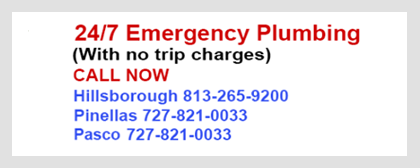Usually the first sign of a plumbing leak in your Tampa bathroom will be water stains on the ceiling of the room directly below.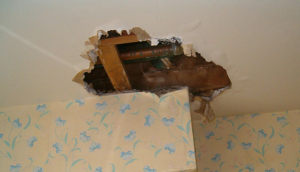
This is usually a sign that the leak has caused expensive damage to hidden areas and you’ll need to call a professional Tampa plumber like Cass Plumbing to take a close look and repair the leak.
Most plumbing leaks originate near plumbing fixtures like bath tubs, shower enclosures, sinks and toilets.
By taking the time to look out for some tell-tale signs that your bathroom could have a leak you could save yourself a headache and expensive future repair bill.
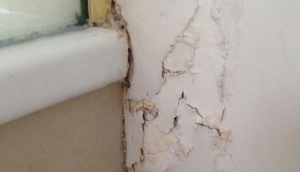 Shower leaks
Shower leaks
It’s a good idea to check the seals around your shower from time to time as this is somewhere where an undetected leak can lead to a more serious plumbing problem.
Major damage can be caused if water is constantly leaking and coming into contact with the surrounding wall or floor.
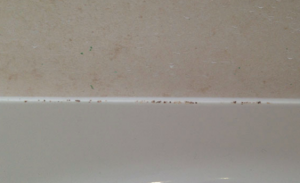 If left the problem could soon become and expensive plumbing repair because extensive renovation work might also be required.
If left the problem could soon become and expensive plumbing repair because extensive renovation work might also be required.
Wooden floorboards and joists are prone to swelling and eventually rot which can result in an expensive replacement project where your shower tray, or enclosure may have to be removed so that work can begin on the damaged area below.
Things to look out for include peeling paintwork and rotting flooring. If you have vinyl flooring this is more of a problem as water puddles can cause the flooring to curl and deteriorate to such a level where it will allow water to come into contact with whatever is underneath – usually wood.
Shower curtains should be kept inside the bath tub when taking a shower to minimise the risk of puddles of water on your flooring. Mould spots on silicone and seals are another trouble sign. This can often indicate that there are gaps in any silicone that should be repaired.
Check shower doors, check the condition of the rubber seals, check for gaps where the shower tray meets the floor. Sometimes sealant is used. If it’s rotten and has gaps scrape it out and apply a new lot. Remember to make sure its completely dry before testing or using your shower.
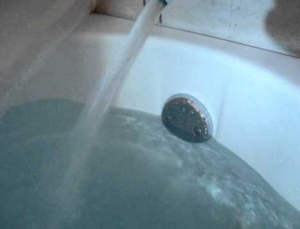 Bathtub leaks
Bathtub leaks
The same applies to shower enclosure leaks. Check all areas and seals for gaps. It can be difficult to spot some leaks as water tend to disperse very slowly.
Leaks from pipes can be difficult to detect because the pipe is often hidden behind bathroom panelling and walls. In such cases your first notion of a leak will be water stains on the ceiling of the room below.
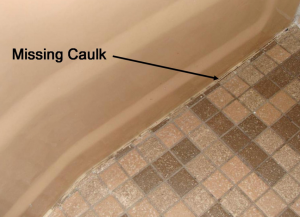 Bathroom floor leaks
Bathroom floor leaks
Vinyl flooring is prone to rot and will often curl at edges from prolonged exposure to water.
Tiled floors can leak through cracked tiles or problems with the grouting. Make sure you use a plumber with insurance for bathroom renovations and tiling work as problems in this area can cause major damage.
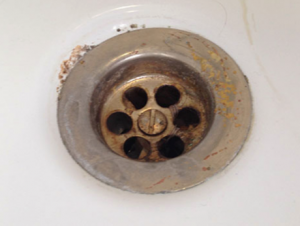 Bath drain leaks
Bath drain leaks
Leaks around plugs and drains are one of the most common places where a leak can form in a bathroom .
More often than not the water will leak slowly so it can be difficult to detect. The easiest way to test for a leaking drain or bath plug is to plug the hole and fill the bath tub with a little water. Check back after an hour to see if the water level has dropped. If it has it’s a obvious sign of a leak – although it could also be the seal of the plug stopper so be sure to check this too. It’s a lot cheaper than ripping a bath tub only to find that there isn’t any damage below.
Drain leaks are more common with plastic and fibreglass bathtubs. The same is true of shower enclosures and shower trays. The material is softer than a ceramic so can move slightly as you manoeuvre on top of them. This can sometimes break the seal around the drain or plug hole which can allow water to escape onto the area below.
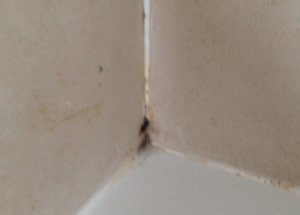 Tiling leaks
Tiling leaks
Tiles can leak by allowing water to escape through damaged silicone or grouting.
Escaped water can easily manifest behind walls or drip down onto the floor area, and cause damage. Mouldy tiles are a warning sign that there may be gaps in your grouting or silicon. Often tiles will come loose or fall off as a result.
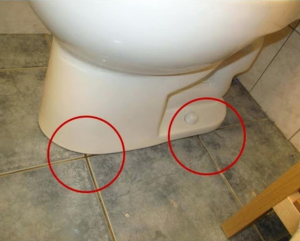 Toilet leaks
Toilet leaks
Most leaks that originate from a toilet are caused by a leak between the toilet and the waste pipe. This means that every time your toilet is flushed water will leak. Because your toilet is probably used more often than shower damage to floors can escalate quickly to become expensive plumbing repair jobs.
If your toilet moves when you sit on it its a sign that you could be in trouble as over time the rocking could potentially break the flange seal and lead to a leak. Check the seals round the bottom of the toilet, where it meets the floor, to make sure that the toilet is secure.
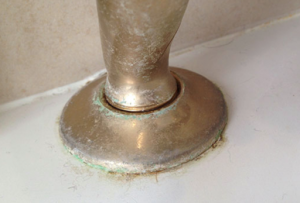 Tap leaks
Tap leaks
Leaks around taps will often lead to an area that is hidden so detecting a leak can be difficult.
Damaged seals and deteriorating silicone areas around taps and faucets can allow water to seep through and damage the area below.
On sinks and basins its usually easier to get a clear view of exactly whats going on underneath the sink so pouring excess water around the top of the tap area and checking the area below is the easiest way to detect a leak here.
 Sink leaks
Sink leaks
Sink leaks can also occur at pipe joints and in some cases the pipes themselves. It’s always a good idea to check thoroughly at regular intervals. Water running down a pipe and onto the floorboards below can cause them to become swollen and go rotten over time.
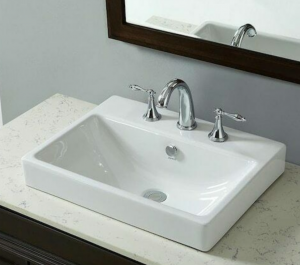 Sink drain leaks
Sink drain leaks
Sinks drains can leak in the same ways as bath drains so the same type of checks should be carried out. Puddles and excess water at the base of the basin on the floor are obvious signs that there is a leak.
 Call Cass Plumbing if you have a hidden bathroom leak
Call Cass Plumbing if you have a hidden bathroom leak
If the leak is hidden the best thing to do is call the Tampa plumbing professionals at Cass Plumbing. We will be out to fix all your bathroom plumbing leaks fast!



